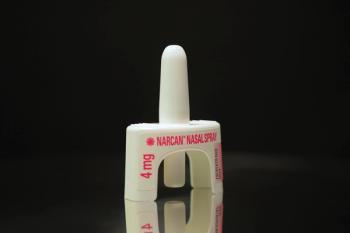
Mail-order pharmacies not necessarily the best deal
Mail-order pharmacies may not always provide the lowest costs for employers, despite conventional wisdom to the contrary, according to Michael Johnsrud, associate director of the Center for Pharmacoeconomic Studies at the University of Texas at Austin College of Pharmacy.
"There's a notion that mail order saves money," Johnsrud said at the recent National Association of Chain Drug Stores Pharmacy & Technology Conference in San Diego. "We found that there really isn't a whole lot of published evidence."
After a comprehensive review of existing literature on mail-order pharmacies, Johnsrud concluded that there is not a single, well-controlled, objective, peer-reviewed article that measured net costs to plans of mail order compared with community pharmacies.
Most of the existing literature on mail-order pharmacies is highly anecdotal and produced by nonobjective sources such as think tanks and marketing materials, said Johnsrud. As a result, employers and other plan sponsors widely believe mail order saves them money due to economies of scale, lower overhead, greater efficiency, and more aggressive efforts to encourage the use of generics.
Plan sponsors should more fully analyze the net costs of mail-order services, a task that is impeded by lack of transparency in the mail-order industry, Johnsrud said. Plan sponsors should also be aware that mail-order pharmacies often have conflicts of interest. For example, Johnsrud's study found that 66% of mail-order Rxs in the third quarter of 2003 were filled by four PBMs, which have been investing heavily in their own mail-order pharmacies.
Johnsrud said transparency is increasing among PBMs but that more data are needed about their revenues and profit margins. More employers are starting to demand this transparency from PBMs. The Human Resources Policy Association, a coalition of more than 250 of the largest U.S. corporations, developed a transparency agreement under the title "Transparency in Pharmaceutical Purchasing Solutions," or TIPPS.
The agreement requires pharmacies to disclose the actual acquisition costs of drugs and to pass through all rebate revenue, increase competition among PBMs based on administrative services and clinical management, and provide incentives for employees to maximize cost-effective therapies.
In July the association announced it has certified 10 PBMs under the TIPPS agreement: Aetna Pharmacy Management, Caremark, CIGNA, Medco, Restat, Blue Cross/Blue Shield of Alabama, Catalyst Rx, HealthTrans, MedImpact, and Walgreens Health Initiatives. "It doesn't mean they're developing transparent models with all their clients, just the clients in this group," said Johnsrud.
After conducting his own study of two publicly funded programs in Texas, Johnsrud found that although net cost to enrollees is often lower through mail order, plan sponsors pay more than they would if the drugs were purchased through a community pharmacy.
Determining actual cost savings requires a much more sophisticated look at the claims data that administrators in charge of selecting programs for plan sponsors often lack the experience or background to conduct, according to Johnsrud. Factors other than unit pricing that should be considered include the effects of discounts and rebates, costs per enrollee month or cost per day rather than cost per claim, and the impact of product waste.
The study found that in "Plan A," eight of the top 20 generic mail-order drugs had a higher per-unit cost when purchased by mail rather than retail. A similar variability in per-unit costs between retail and mail-order drugs existed in "Plan B."
Newsletter
Pharmacy practice is always changing. Stay ahead of the curve with the Drug Topics newsletter and get the latest drug information, industry trends, and patient care tips.





















































































































































